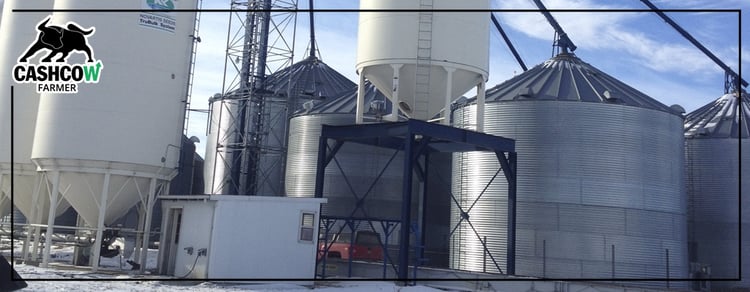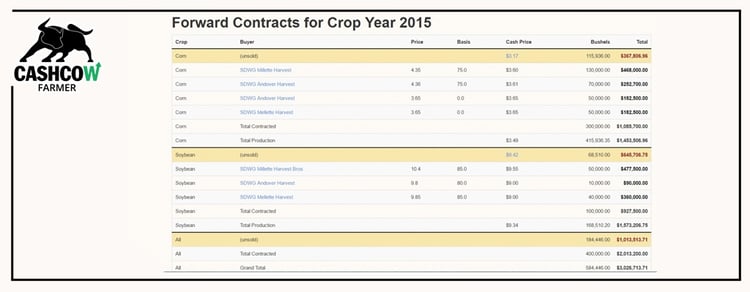Don't have time to read, click play above or subscribe to our podcast on itunes.

Dwight Eisenhower used to say, "In preparing for battle, I have always found that plans are useless but planning is indispensable."
It’s an interesting quotation. He didn’t know where the Germans were going to be at, but he had a plan and modified that plan as information was revealed to him once the battle unfolded.
The same is true of a grain marketing plan. We may have price targets at certain points, but then we may get an extreme rally. This will change our price target dramatically, especially when we’re looking at technical analysis of commodities.
Any successful business is going to forecast business and have a plan for sales. Just look at Apple, or Microsoft, or any Fortune 500 company—they all have a plan for sales. If you want to be a professional farmer, maximize your income, and be exceptionally wealthy, you’ve got to run your farm like a Fortune 500 company.
And a grain marketing plan is essential to do that. That’s the why behind having a plan.
This month, we’re going to focus on the four main parts of building a grain marketing plan. We’ll take them one at a time and break them down.
Here’s the four-part process we will be going over this month:
- Quantify
- Logistics
- Tools
- Price Targets
Step one to successfully building a grain marketing plan is to quantify exactly how much grain you need to market.
Quantify
You have two types of crop to quantify:
- Old Crop - What you’ve got in the bins.
- New Crop - Whatever you’re planning to grow.

Few farmers quantify their grain, so when an opportunity comes, they’re left scrambling. They know they need to sell, but they have to sit down and figure out how much they have in the bins.
Then they’re left chasing the market, rather than having a prepared plan. They’re not prepared, for example, to say, “Here’s an opportunity; let’s execute ⅓ of old crop grain and 15% of our new crop grain. We know exactly how many bushels we need to call the elevator or call our broker and be hedging.”
How Does This Look, Practically?
When you’re growing a crop, your production numbers will fluctuate based on the weather conditions in your area. If you have weather issues, you’ll have to flex your grain marketing plan down so you don’t overextend yourself and make contracts that you can’t fill.
Or if you’re having an epic growing season, ratchet up the quantities you’re selling as the marketing targets are hit.
Your plan is a living, breathing program, just like anything. As in war, you change as the circumstances change.
Breaking It Down
It’s also a good idea to divide your grain into marketable units.
Let’s say you’ve got 100,000 bushels of old crop corn. At our farm, we usually break it into thirds: roughly 33,000 bushels three times.
The new crop we divide into 4-7 marketable units. We’ll do 15%, then another 15%, then 20%—so the first three sales will get us to 50%. Then, depending on what the market’s doing, we might do 20% then another 30%, or 20% then another 20% and a 10%, saving that 10% for a really aggressive price target.
Without a plan, I don’t see how a guy can make successful sales. On the other hand, with a plan, your banker’s gonna love you, even if it’s not perfect. You just say, “This is my plan, these are my targets. Here’s how profitable we’re going to be.” Then watch him give you a hug and ask if you have any plans for expansion and need help with that…
Insurance
People often don’t understand how important insurance is in your grain marketing plan. The insurance level you decide for your farm will tell you how many bushels of each commodity you can market in the cash markets. Once you fill your guaranteed bushels in the cash market, you can cover the rest with derivatives such as futures and options. Don’t worry, we will be covering those soon enough.
Tools
There are many tools handy for the job of quantifying grain.
Obviously, spreadsheets are good for this sort of thing. You can easily divide and maneuver the numbers around.

But you’ll need to figure out how much income you’ll make if you execute according to plan, and you’ll need to know your margin of error.
That’s where Cash Cow comes in. With it, you can plug in your sales in the grain marketing software. It’ll show you based on your farm’s specific costs which fields are profitable.
If your plan is going to lose you money, you’ve got two problems:
1) Price problem: You might be too conservative on your targets.
2) Cost problem: It’s costing you too much to produce those commodities in this environment, and you need to do something else.
That’s powerful information. If you’re making a profit, you can proceed. But if you project to lose money, you’ll know you need to make some adjustments.
Conclusion
You’ve got to know how much to market.
If you get out of bed tomorrow morning and corn is up 50¢, and you have to make a sale, will you be ready?
If not, you’re not ready for the constantly shifting battles of business.
Want some help quantifying your grain? Cash Cow Farm Accounting Software makes it ridiculously easy.





